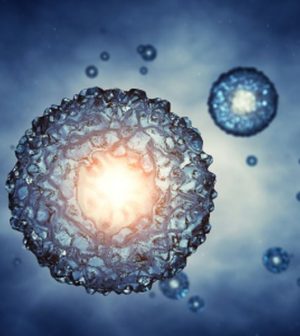- Navigating Your Midlife Crisis: Embracing New Possibilities
- City Raccoons Showing Signs of Domestication
- Mapping the Exposome: Science Broadens Focus to Environmental Disease Triggers
- One Week Less on Social Media Linked to Better Mental Health
- Your Brain Changes in Stages as You Age, Study Finds
- Some Suicide Victims Show No Typical Warning Signs, Study Finds
- ByHeart Formula Faces Lawsuits After Babies Sickened With Botulism
- Switch to Vegan Diet Could Cut Your Greenhouse Gas Emissions in Half
- Regular Bedtime Does Wonders for Blood Pressure
- Dining Alone Could Mean Worse Nutrition for Seniors
Embryo Technology Might Lead to Children With Genes From Two Men

New technology might soon allow men in same-sex relationships to have a child genetically related to both dads, researchers say.
The technology uses skin cells from one person to alter the genetics of a donated egg, researchers reported March 8 in the journal Science Advances.
That egg can then be fertilized by a sperm cell to create a viable embryo containing the combined genetics of the skin donor and the sperm donor.
This could help same-sex couples produce their own child, as well as help women who aren’t able to produce viable eggs due to advanced age, cancer treatment or other causes.
“The goal is to produce eggs for patients who don’t have their own eggs,” said senior author Shoukhrat Mitalipov, director of the Oregon Health & Science University Center for Embryonic Cell and Gene Therapy.
This is the same technique that researchers famously used in 1996 to clone a sheep in Scotland named Dolly, researchers said.
In that case, researchers created a clone of one parent, while the OHSU researchers focused on creating embryos with genetics drawn from both parents.
The OHSU team followed a three-step process to do this in mouse experiments.
They first stripped a mouse egg of its nucleus, then transplanted the nucleus of a mouse skin cell into the mouse egg.
Next, they prompted the implanted skin cell nucleus to discard half its chromosomes, in a process similar to that which occurs in cells dividing to produce mature sperm or egg cells.
Finally, the researchers fertilize the new egg with sperm using in vitro fertilization, resulting in a healthy embryo with two sets of chromosomes equally donated by two parents.
This process could prove a simpler option to a competing technique that other labs around the world are testing, in which skin cells are fully reprogrammed to become either egg or sperm cells.
“We’re skipping that whole step of cell reprogramming,” researcher Dr. Paula Amato, a professor of obstetrics and gynecology in the OHSU School of Medicine, said in a school news release. “The advantage of our technique is that it avoids the long culture time it takes to reprogram the cell. Over several months, a lot of deleterious genetic and epigenetic changes can happen.”
However, researchers warn that it will be years before this technique could be available for humans.
“This gives us a lot of insight,” Amato said. “But there is still a lot of work that needs to be done to understand how these chromosomes pair and how they faithfully divide to actually reproduce what happens in nature.”
More information
Planned Parenthood has more about in vitro fertilization.
SOURCE: Oregon Health & Science University, news release, March 9, 2024
Source: HealthDay
Copyright © 2025 HealthDay. All rights reserved.










